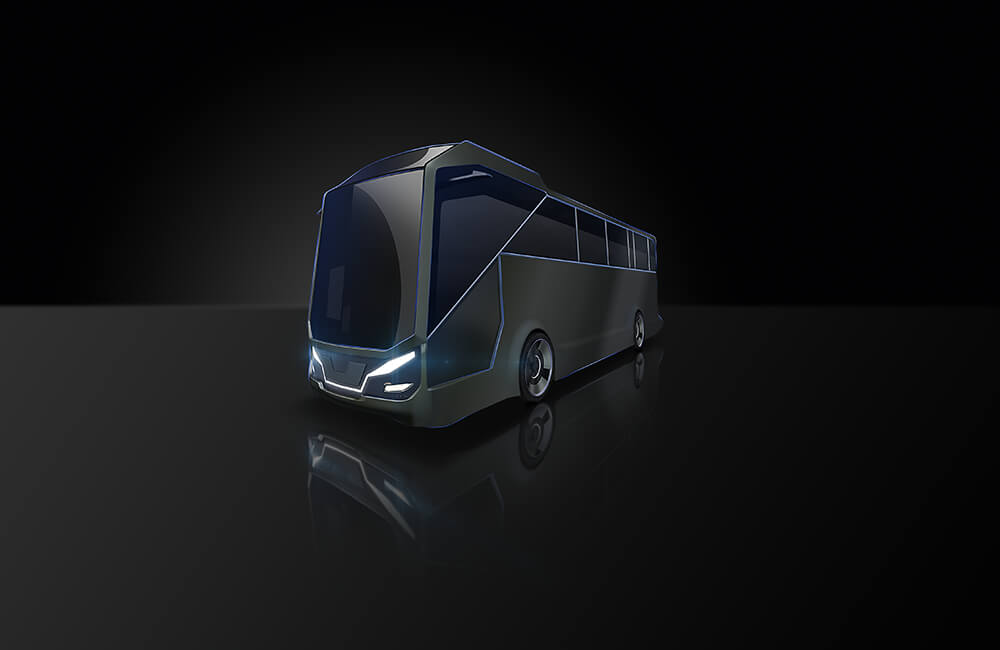|
|
|
|
|
|
|
|

Bus headlights: LED reduces CO2 footprint by one third
03-02-2023The fact that bus headlights are becoming more sustainable is shown by their carbon footprint: the emissions of a LED bus headlight from HELLA are around 30 percent better compared to the halogen version.
The keypoints in short
- HELLA is pursuing the goal of significantly reducing CO2 emissions on many levels.
- LED headlights reduce CO2 footprint: The emission of a HELLA LED bus headlight perform 30 % better than those of the halogen variant.
In the special vehicle market, halogen headlights are only slowly being replaced by LED variants; in special vehicles, the market share for halogen variants is still up to 80 percent. In buses, too, only one in three headlights is equipped with LEDs. The fact that the LED headlights have a lower CO2 footprint has now been shown by a project team in the Lifecycle Solutions business unit. In the interview, Christian Haase, Head of Development Lifecycle Solutions, reports on the project.
Christian Haase, for the first time, the Lifecycle Solutions division determined the simplified carbon footprint of a product. What's behind this?
We have calculated how much CO2 is produced in the life of a bus headlight. This includes, among other things, the emissions caused by the raw materials and components we use. Each type of plastic or a printed circuit board has its specific CO2 value, which we assign and take into account. But the emissions generated by production at HELLA and by the use of the headlamp in the moving bus have also been included. We have not taken logistics into account. The aim of our simplified calculation: We want to gather experience and uncover potential for more climate-friendly products.
Tell us the result: What is the carbon footprint of a bus headlight?
We compared the LED bus headlight of one of our customers with the halogen version. This shows: The CO2 footprint of the LED headlamp equals 101 kg CO2 equivalents (CO2eq), just under a third less than the halogen headlamp's 149 kg CO2eq. The reduction results mainly from the use phase: LEDs are much more efficient and require much less energy to operate, so that over the life of the luminaire only 40 kg of CO2 are produced instead of a good 100 kg for the halogen version.
In line with HELLA's climate targets, the carbon footprint of HELLA products is to be further reduced. Which further levers do you see?
Our example calculation shows further potential, for example in the heat sink: Today we use a heat sink made of aluminum, a CO2-intensive raw material. In the future, we could use a thermally conductive plastic here, which would reduce the heat sink's carbon footprint by half.
Wether production, purchasing or material development – what is fundamentally important for all our products is that HELLA is pursuing the goal of significantly reducing CO2 emissions on many levels.
Thank you for the insight, Christian Haase.
Learn more about the customer segment buses and coaches.
